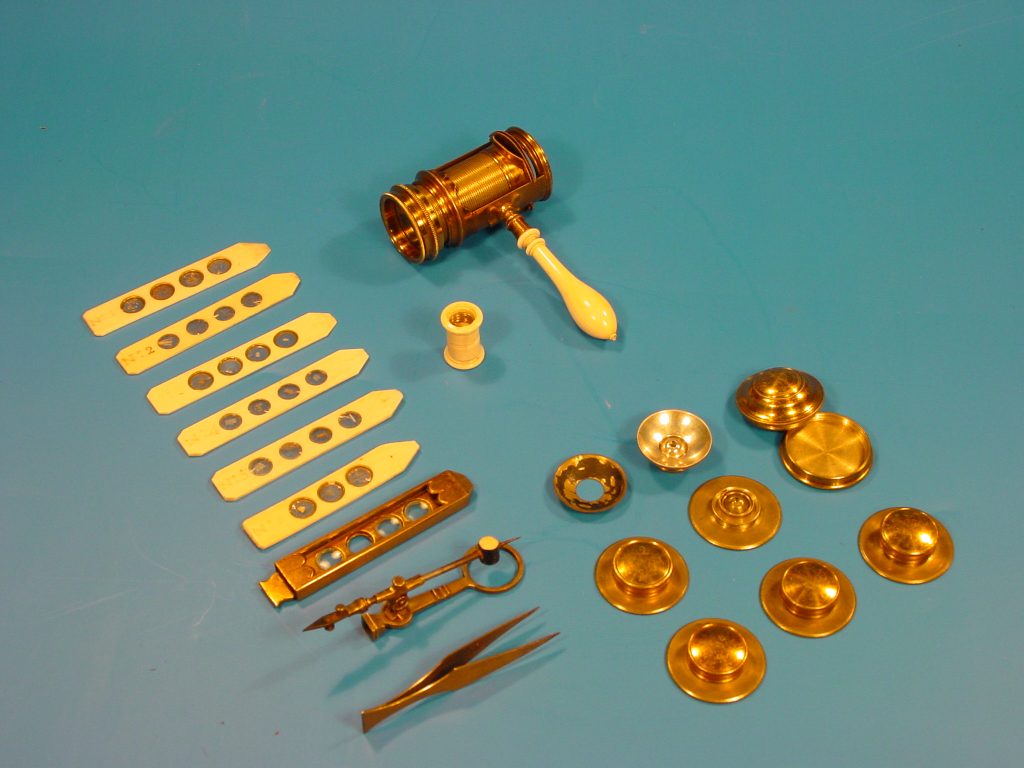
Year/Period |
1747-1756 |
Maker |
STERROP |
Country |
United Kingdom |
Signature |
STERROP / Maker |
Category |
Microscopes |
Optical 1 |
Simple |
Optical 2 |
Non-achromatic |
Size of the box (h x w x d) |
12.8 × 7.4 × 4.7 cm |
Size of the microscope (h x w x d) |
Length 5.6 cm, diameter 3.3 cm |
Inventory number |
SM 2 |
The microscope is kept in a little box covered with shark skin, the inside is lined with green velvet.
The design of this type of microscope is attributed to the Dutchman Nicolaas Hartsoeker, he published a drawing in 1694. The design was improved in the beginning of the eighteenth century by the Englishman James Wilson, who changed the position of the condenser lens. They were also made by him and later others, like Edmund Culpeper followed suit. In England they are known as ‘screw barrel’ microscopes.
Though dating from the middle of the eighteenth century, this specimen is of the same built as the earlier ones by Culpeper.
The microscope is built around a brass cylinder, the objective lenses are mounted on one side. The condenser lens is mounted at the end of another cylindrical tube that screws into the first outer cylinder. Part of the outer cylinder is cut away, leaving enough space to insert preparations, these fit between two brass plates that are kept in place by a spring. In this way focussing is simple but effective. This microscope has an ivory handle.
Objective lenses ‘2’ to ‘6’ and a Lieberkühn ‘L’, the following values were measured:
| Lens | 2 | 3 | 4 | 5 | 6 | L |
| Focal length (mm) | 2.61 | 3.48 | 5.11 | 4.18 | 11.94 | 8.36 |
| Magnification | 95.7 | 71.8 | 48.9 | 59.8 | 20.9 | 29.9 |
| Aperture (mm) | 0.66 | 0.68 | 0.89 | 1.24 | 1.82 | 0.66 |
| Numerical aperture | 0.13 | 0.10 | 0.087 | 0.15 | 0.076 | 0.039 |
| Resolving power (µm) | 3.2 | 6.5 | 4 | 3.2 | 6.5 | 10 |